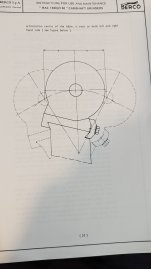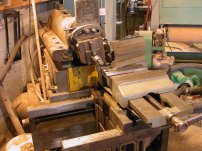Please note the master follower wheel here and it's size.
This is critical or the master cam needs to be a very weird shape. This of course can be done but .... not so easy.
Normally the master has an "envelope" or way oversized but the rise and fall are what matters.
Strange here to me is the cast or close to size starting stock for custom.
More used to a solid shaft that gets cut on a lathe and then milled flats on the 4 axis mill in the special world.
In big auto build yes you get cast to form.
Roller cams now have those internal curves so the mentioned stuff about wheel size can get in the way.
Acc/Dec ramps, inertia in the valve train.
Life of the valve springs? I have friends who throwaway valve springs every weekend or two.
Racing is fun.
Here is to our OP getting a national championship in his class with help from here.

All this talk ..
go do it any which way and see how she runs.







